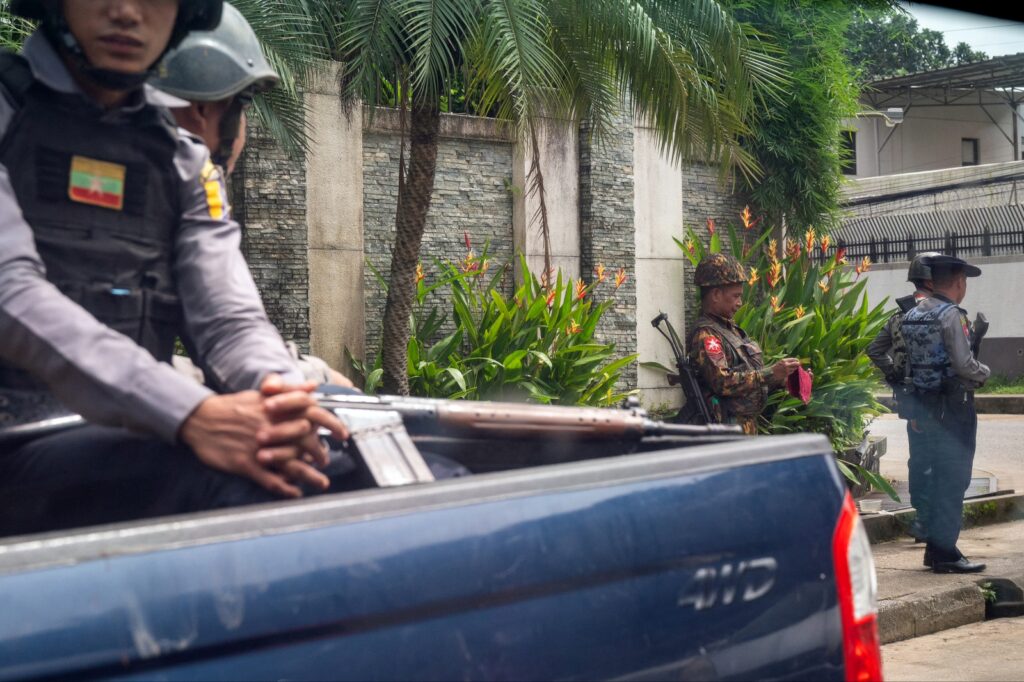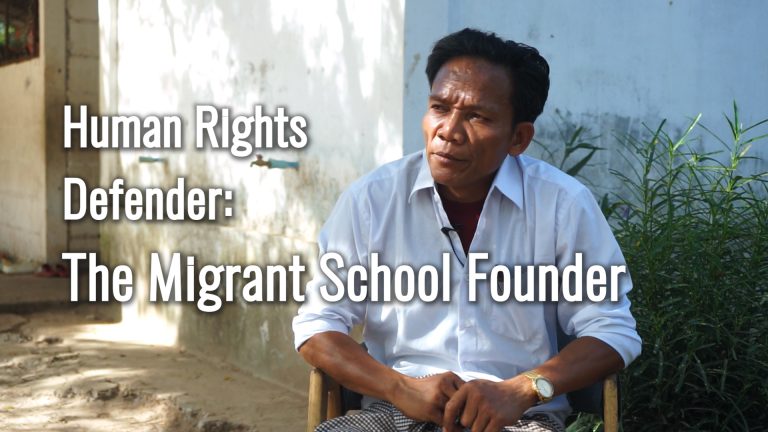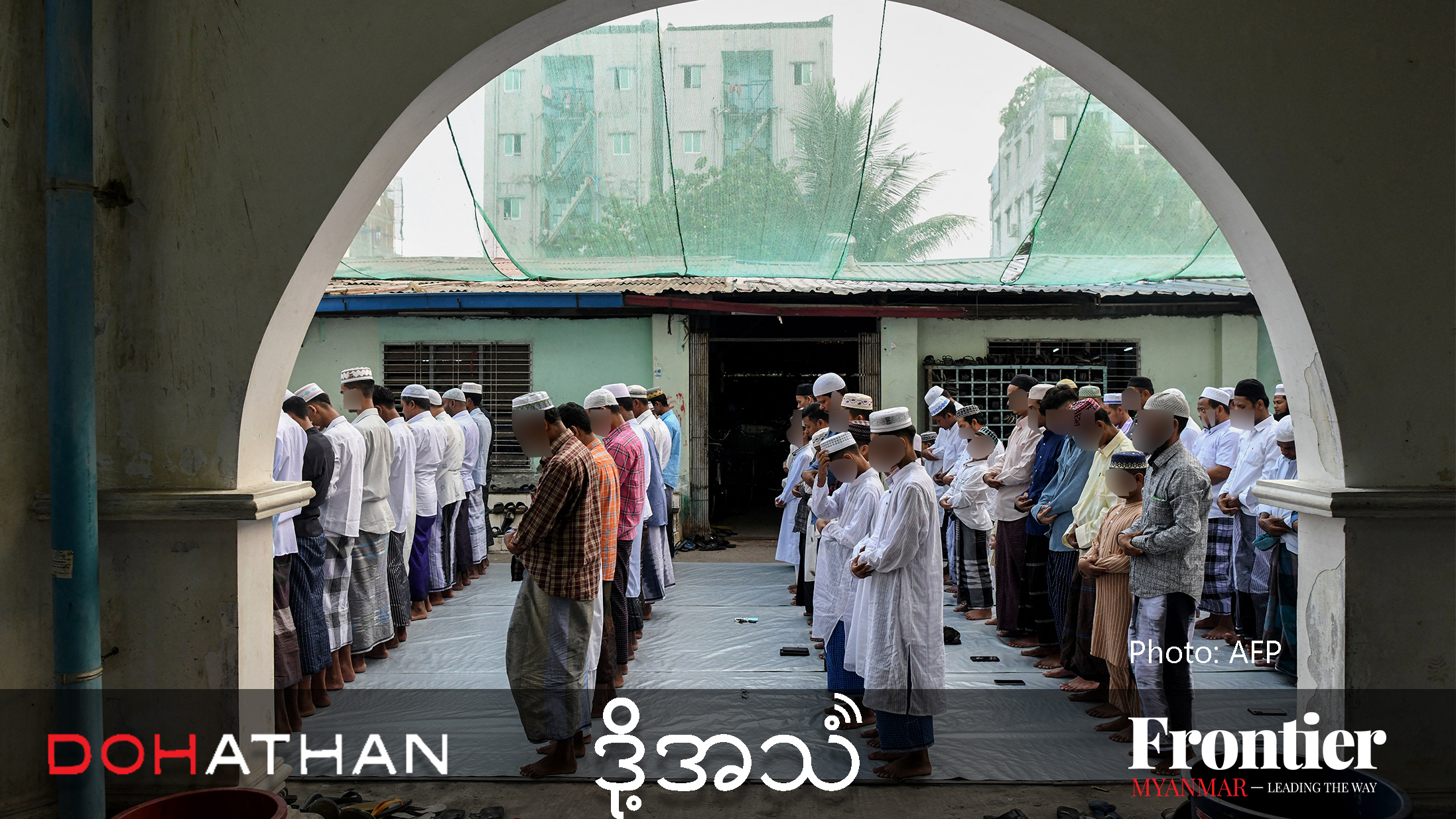Many of those taken prisoner by Myanmar’s military regime disappear without a trace, leaving their desperate partners and family members to navigate a cruel and complex bureaucracy rife with corruption.
By YE MON | FRONTIER
Ko Nyein Chan* had planned to work on a merchant ship for two years, saving up enough money so he could marry his girlfriend, Ma Nandar*. But the last time she saw him was on the evening of February 12, sitting with friends under a tree in a residential lane of Hlaing Township in Yangon.
Nandar had left to change her clothes at her home nearby, before she and Nyein Chan were to have dinner at his family home. Later that evening, after he failed to show up, she heard the news from witnesses in the neighbourhood. Only minutes after she had left him, he and five of his friends were arrested by armed men in plain clothes.
Nandar and Nyein Chan’s family members went to the nearest police station but were told he wasn’t there. “He and his friends were not at the interrogation centres that we visited either,” she told Frontier.
Her hopes rose two days later, when four of Nyein Chan’s friends were released and dropped off near their homes.
“They were held one to a room and communicated with each other by knocking on the walls,” she said of their detention. But because they were blindfolded during their arrest and release, they didn’t know where they had been held.
The other detained friend was charged with incitement and sentenced to three years’ imprisonment. “Every time he writes a letter home, he asks, where is Ko Nyein Chan?” said Nandar.
Since the military seized power in a 2021 coup, pro-regime media outlets and social media channels have trumpeted the arrest of resistance fighters and activists opposing military rule. However, there was no news about the arrest of Nyein Chan, even though he was part of the Hlaing Urban Guerrilla force.
Nandar and Nyein Chan’s relatives kept making enquiries, and during a visit to the police station in Hlaing in March, the relative of another detainee gave her the telephone number of someone she said might be able to help.
When Nandar called the number, it was answered by a man who identified himself as U Ye Naung Lwin, a deputy planning and finance director at the Myanmar National Human Rights Commission.
“He asked for details about my boyfriend. After two days he said he would need K2.2 million [about US$700] and I transferred the money to him,” Nandar told Frontier. After that, Nandar was told that Nyein Chan had been transferred to “a hospital” and was taking a long time to recover.
“I went to Insein Prison and asked about him,” she said, knowing that none of the other detention facilities in Yangon had a hospital. “But he wasn’t there.”
On April 4, MNHRC deputy director Ye Naung Lwin invited Nandar to his office in Yangon. There, he told her the organisation would escalate Nyein Chan’s case “to a higher level” by submitting a letter petitioning for information about his whereabouts.
“That was my last conversation with Ye Naung Lwin,” she said. “I’m not sure what he meant by ‘higher level’. He also said that if he doesn’t contact me again, I must assume my boyfriend is dead.”
Nandar received no further updates.
When Frontier contacted MNHRC, a staff member said he had no knowledge of officials there soliciting money from relatives of missing detainees. He confirmed that Ye Naung Lwin worked for the organisation but said he was not available to comment, and that Frontier should call back. However, subsequent calls went unanswered.
Frontier also contacted U Ye Htet Aung, a personal assistant to Ye Naung Lwin, posing as a relative of Nyein Chan. Ye Htet Aung said he could help locate Nyein Chan – for K2.2 million.
‘They have no sympathy’
On June 17, a lawyer gave Nandar the number of an army major at the notorious Ye Kyi Ain interrogation centre in Yangon’s outer northern suburbs. The major told her over the phone that he could locate Nyein Chan in exchange for K500,000.
“The lawyer said the major is well connected and can find my boyfriend,” Nandar said. “We transferred the money to the major’s account but haven’t heard anything since.”
Nandar said she became even more worried about Nyein Chan when she heard about the death in custody of Too Too, a champion of traditional Myanmar boxing, or lethwei.
On April 11 last year, Too Too and five other men were arrested in Sagaing Region’s Minbu Township, where he lived. They were accused of belonging to an armed resistance group and were not heard of again until July this year. Local media reported that junta officials told Too Too’s family on July 13 that he had died in custody three months earlier, on April 26. The family was not allowed to see his body.

There was also a dark precedent to Nyein Chan’s arrest when, in January, another member of the Hlaing Urban Guerrilla group, Ko San Oo*, was arrested at a safe house in Yangon. The next day, soldiers arrived with San Oo at his family home in the city, where they also arrested his father, mother and a younger brother. According to neighbours who overhead the soldiers, these arrests were in retaliation for San Oo refusing to reveal the locations of his fellow urban guerrillas.
“We have no idea where they’re being held,” Ko Htet Aung*, a relative of San Oo, told Frontier. “The junta forces wouldn’t do this if they were human. They have no sympathy; it’s like they’re brainless.”
The junta commonly arrests the family members of activists and resistance fighters, and some of them are not heard of again. They include Ko Harry, the brother-in-law of D Nyein Lin, a prominent activist who heads guerrilla operations in Yangon Region.
Ko Harry was arrested in Yangon’s inner Sanchaung Township in June and his family members filed a missing persons report at the township police station, but they have received no news of his whereabouts.
“He [Henry] worked in the modelling industry. As far as I know, he took part in protests in 2021 but didn’t actively participate in the revolution after that,” Ko Myo*, a friend of Ko Harry, told Frontier. “I believe junta forces wanted to arrest Ko D Nyein Lin, but they have often arrested family members if they can’t find their targets.”
‘I’ll never give up looking’
Although enforced disappearances are common in Myanmar, they are difficult to quantify or verify. Mr James Rodehaver, who directs the Myanmar Team of the United Nations Office of the High Commissioner for Human Rights, told Frontier, “OHCHR is aware of enforced disappearances that have occurred, but we have no reliable means to provide comprehensive, verified statistics.”
Rodehaver said obstacles to verification include their lack of access to the country – a problem shared with many other human rights organisations – as well as “the nature of the violation itself”. He explained, “When someone is disappeared, the perpetrator, in most cases the military or its allies, operates without any hint of transparency… Places of detention are kept off limits to monitors, human rights groups, and in most cases, lawyers.”
Because of these and other obstacles, the data of organisations tracking enforced disappearances is incomplete. Rights group Equality Myanmar recorded 60 people “arrested, tortured and disappeared” since the coup but identified no cases in Yangon, where Nyein Chan and others were seized. The largest number of such cases, at 27, were recorded in Sagaing.
In an August 30 statement to mark the International Day of the Victims of Enforced Disappearances, the Karen Human Rights Group said at least 72 civilians had been forcibly disappeared since the coup in areas of southeastern Myanmar inhabited by the Karen people.
“Most of the missing are young people, who were arrested on suspicion of having a close relationship with a resistance group or providing it with funding,” KHRG advocacy coordinator Saw Nanda Hsue told Frontier, adding, “Sometimes, resistance groups have arrested suspected military informers and they have disappeared.”
He added that in rural areas affected by conflict, many residents disappear after being seized by soldiers for use as human shields or for forced labour. In contrast to Nandar and the family of Nyein Chan, Nanda Hsue said residents of these areas are often too afraid to ask about missing loved ones at police stations and prisons, or to representatives of ethnic armed forces.
Nandar said she has not reported Nyein Chan’s case, or sought any support, from human rights or other non-government organisations, because she didn’t know how to.
“For people like us who feel hopeless, there should be an organisation that can help us with disappearance cases. I don’t want to just wait for a call from the Myanmar National Human Rights Commission. I’m confused about what to do,” she said.
“He said we could get married after he worked as a seaman for two years,” Nandar said of Nyein Chan, “but that plan has been destroyed.”
“But I’ll never give up looking for my boyfriend. I believe in my heart we’ll be reunited one day.”
* indicates use of a pseudonym for security reasons







